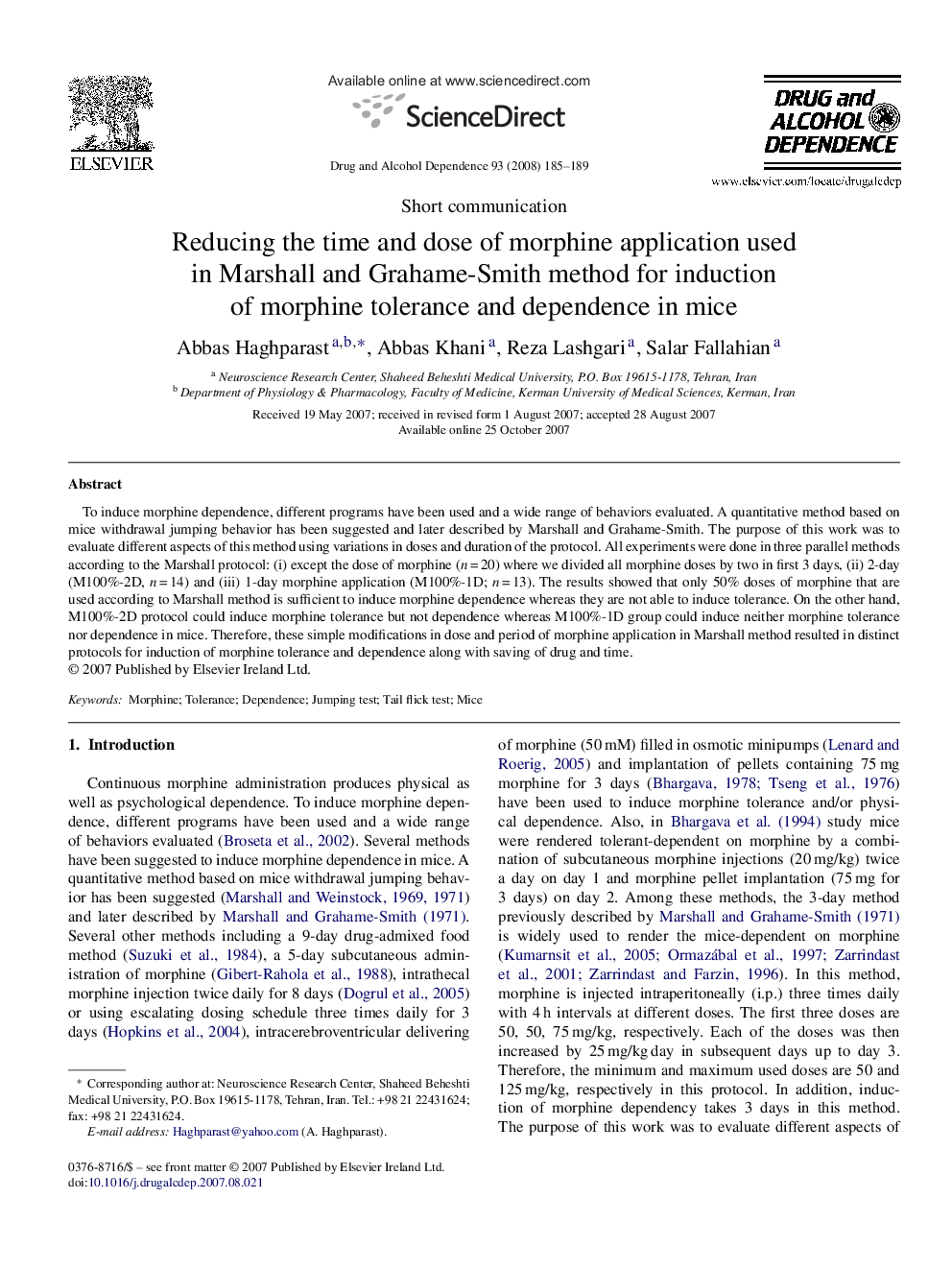| Article ID | Journal | Published Year | Pages | File Type |
|---|---|---|---|---|
| 1071600 | Drug and Alcohol Dependence | 2008 | 5 Pages |
Abstract
To induce morphine dependence, different programs have been used and a wide range of behaviors evaluated. A quantitative method based on mice withdrawal jumping behavior has been suggested and later described by Marshall and Grahame-Smith. The purpose of this work was to evaluate different aspects of this method using variations in doses and duration of the protocol. All experiments were done in three parallel methods according to the Marshall protocol: (i) except the dose of morphine (n = 20) where we divided all morphine doses by two in first 3 days, (ii) 2-day (M100%-2D, n = 14) and (iii) 1-day morphine application (M100%-1D; n = 13). The results showed that only 50% doses of morphine that are used according to Marshall method is sufficient to induce morphine dependence whereas they are not able to induce tolerance. On the other hand, M100%-2D protocol could induce morphine tolerance but not dependence whereas M100%-1D group could induce neither morphine tolerance nor dependence in mice. Therefore, these simple modifications in dose and period of morphine application in Marshall method resulted in distinct protocols for induction of morphine tolerance and dependence along with saving of drug and time.
Related Topics
Life Sciences
Neuroscience
Behavioral Neuroscience
Authors
Abbas Haghparast, Abbas Khani, Reza Lashgari, Salar Fallahian,
